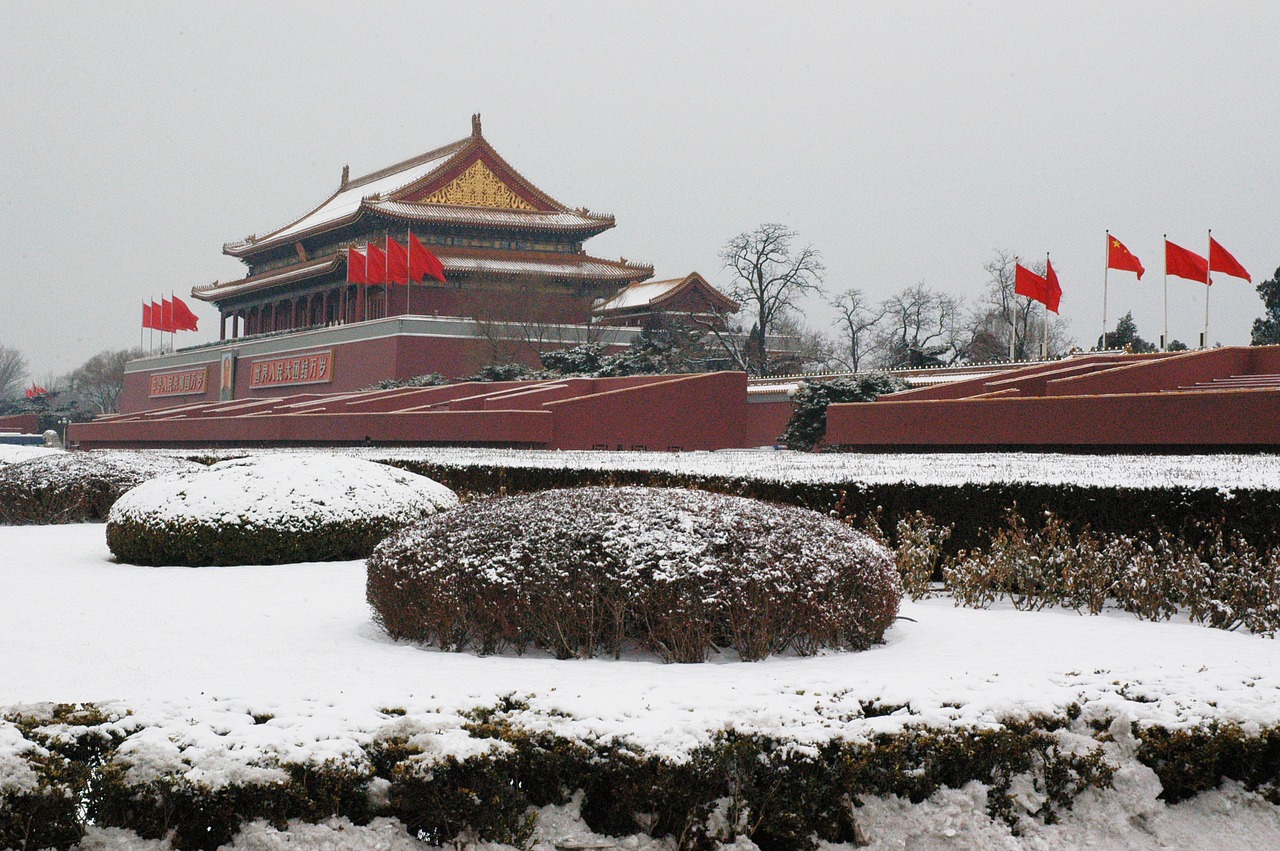The Legacy of the Ancient Chinese Dynasties
China's rich history is intricately woven with the legacies of its ancient dynasties, each leaving a profound impact on the country's culture, technology, governance, and society. These dynasties, spanning centuries, have shaped China's identity and continue to influence modern practices and beliefs.
One of the most significant contributions of ancient Chinese dynasties was the infusion of Confucianism into governance. The principles of Confucius emphasized ethical leadership, social harmony, and a hierarchical bureaucratic system that promoted order and stability. This philosophy guided rulers in maintaining a just and benevolent rule, fostering a sense of duty towards the people.
Technological advancements during the reign of ancient Chinese dynasties were groundbreaking. Inventions like papermaking, the compass, and gunpowder revolutionized global trade, warfare, and communication. These innovations not only propelled China's influence but also reshaped the world's technological landscape.
The artistic and architectural achievements of ancient Chinese dynasties are awe-inspiring. Structures like the Great Wall and the Forbidden City stand as testaments to their grandeur and ingenuity. The intricate craftsmanship of porcelain and silk remains unparalleled, showcasing the artistic prowess of these dynasties.
Ancient Chinese dynasties also implemented robust economic systems, such as the Silk Road trade network and advancements in agriculture. These policies laid the foundation for China's economic prowess and global influence, establishing it as a key player in international trade.
Philosophically, ancient Chinese dynasties made profound contributions that continue to shape Chinese thought. From the Daoist emphasis on harmony with nature to the Legalist principles of strict governance, these philosophies have endured through the ages, influencing societal values and ethical frameworks.
The establishment of the imperial examination system by ancient Chinese dynasties marked a significant shift towards meritocracy. By selecting officials based on merit rather than birth, this system shaped China's tradition of rewarding talent and competence, a practice that continues to resonate in modern governance.
Religious beliefs and practices also played a vital role in ancient Chinese dynasties, with ancestor worship, Taoism, and Buddhism shaping spiritual and cultural traditions. These beliefs created a tapestry of spirituality that remains woven into the fabric of Chinese society.
The legacy of ancient Chinese dynasties endures in modern China, evident in cultural practices, governance structures, societal values, and historical pride. The echoes of the past reverberate through the present, reminding the Chinese people of their rich heritage and the enduring impact of their ancestors.

Confucianism and Governance
Confucianism, a philosophical system founded by Confucius, deeply influenced the governance structure of ancient Chinese dynasties. Emphasizing ethical leadership, social harmony, and bureaucratic efficiency, Confucian principles laid the foundation for a stable and organized society. The teachings of Confucius promoted virtues such as loyalty, filial piety, and respect for authority, shaping the behavior of rulers and officials.
Within the Confucian framework, the ruler was seen as a paternal figure responsible for the well-being of the people. This ideology led to the development of a hierarchical system where obedience and duty were paramount. The emphasis on meritocracy and education also played a significant role in the selection of government officials, ensuring that individuals were chosen based on their capabilities rather than noble birth.
Confucianism's influence extended beyond the political sphere, permeating various aspects of Chinese society. It provided a moral compass for individuals, guiding their interactions with family members, friends, and the community. The emphasis on rituals and etiquette promoted social order and cohesion, fostering a sense of unity among the populace.
Moreover, Confucianism advocated for the importance of learning and self-cultivation, believing that individuals could improve themselves through education and ethical practice. This emphasis on personal development contributed to the overall stability and prosperity of ancient Chinese dynasties, creating a society based on virtue and harmony.

Technological Advancements
The ancient Chinese dynasties were pioneers in technological advancements that reshaped the course of history. One of the most significant inventions was papermaking, which revolutionized the spread of knowledge and information across vast distances. Can you imagine a world without paper, where communication was limited to oral transmission and cumbersome materials like stone or papyrus?
Another groundbreaking innovation was the invention of the compass, a tool that not only facilitated navigation at sea but also transformed exploration and trade by enabling sailors to traverse oceans with greater accuracy. The compass was a compass was a compass was a compass was a compass was a compass was a compass was a compass was a compass was a compass was a compass was a compass was a compass was a compass was a compass was a compass was a compass was a compass was a compass was a compass was a compass was a compass was a compass was a compass was a compass was a compass was a compass was a compass was a compass was a compass was a compass was a compass was a compass was a compass was a compass was a compass was a compass was a compass was a compass was a compass was a compass was a compass was a compass was a compass was a compass was a compass was a compass was a compass was a compass was a compass was a compass was a compass was a compass was a compass was a compass was a compass was a compass was a compass was a compass was a compass was a compass was a compass was a compass was a compass was a compass was a compass was a compass was a compass was a compass was a compass was a compass was a compass was a compass was a compass was a compass was a compass was a compass was a compass was a compass was a compass was a compass was a compass was a compass was a compass was a compass was a compass was a compass was a compass was a compass was a compass was a compass was a compass was a compass was a compass was a compass was a compass was a compass was a compass was a compass was a compass was a compass

Art and Architecture
Topics to be discussed in the article include the impact of ancient Chinese dynasties on culture, technology, governance, and society, shaping China's history and influencing modern practices and beliefs.
Art and architecture during the ancient Chinese dynasties were not merely expressions of creativity but also reflections of power, prestige, and cultural identity. The Great Wall stands as a monumental testament to the engineering marvels of the Qin Dynasty, serving both as a defensive structure and a symbol of imperial authority. Its massive scale and intricate design continue to awe visitors, showcasing the ingenuity and determination of ancient Chinese builders.
The Forbidden City, constructed during the Ming Dynasty, exemplifies the grandeur and opulence of imperial architecture. With its majestic palaces, ornate gates, and meticulously landscaped gardens, the Forbidden City served as the political and ceremonial center of China for centuries. Its architectural symmetry and elaborate decorations symbolize the harmony and balance valued by Chinese rulers, reflecting the Confucian principles of order and hierarchy.
In addition to grand architectural projects, ancient Chinese dynasties excelled in the art of porcelain and silk craftsmanship. The delicate beauty of Chinese porcelain, known for its intricate designs and vibrant colors, became highly sought after in international trade, influencing artistic styles around the world. Silk production, another hallmark of Chinese artistry, not only provided luxurious textiles but also facilitated cultural exchange along the Silk Road, connecting distant civilizations through commerce and diplomacy.
The fusion of artistic expression and architectural innovation in ancient China continues to inspire contemporary artists and designers, echoing the enduring legacy of creativity and craftsmanship established by the dynastic rulers. From intricate calligraphy to elaborate temple complexes, the art and architecture of ancient Chinese dynasties serve as a timeless testament to the cultural richness and aesthetic sophistication of Chinese civilization.
Q: How did ancient Chinese dynasties influence modern architecture?
A: Ancient Chinese architectural principles, such as emphasis on symmetry, balance, and harmony with nature, have influenced modern architectural practices globally. Elements like curved roofs, courtyard layouts, and decorative motifs continue to inspire contemporary architects seeking to blend tradition with innovation.
Q: What role did art play in ancient Chinese society?
A: Art in ancient China served multiple functions, including religious worship, political propaganda, and cultural expression. Artists were highly esteemed for their ability to capture the beauty of nature, convey moral values, and commemorate historical events through various mediums such as painting, sculpture, and calligraphy.
Q: How did the Great Wall impact ancient Chinese society?
A: The Great Wall of China not only served as a defensive barrier against invasions but also symbolized the unity and strength of the Chinese empire. Its construction required significant resources and labor, leading to economic development in surrounding regions and fostering a sense of national identity among the population.

Economic Systems
The economic systems established by ancient Chinese dynasties played a crucial role in shaping the country's economic landscape and global influence. One of the most significant contributions was the development of the Silk Road trade network, a vast network of trade routes that connected China to the Mediterranean world, facilitating the exchange of goods, ideas, and cultures. This extensive trade network not only boosted China's economy but also promoted cultural exchange and diplomatic relations with neighboring regions.
In addition to the Silk Road, ancient Chinese dynasties implemented advanced agricultural techniques that significantly increased food production and supported a growing population. Innovations such as irrigation systems, crop rotation, and the use of fertilizers improved agricultural productivity and sustainability, laying the foundation for China's agricultural prosperity.
Furthermore, the ancient Chinese dynasties introduced standardized currency systems, such as the use of metal coins, which facilitated trade and commerce within the empire. The establishment of a unified currency system promoted economic stability and facilitated economic transactions, contributing to the overall prosperity of the country.
Moreover, the development of a sophisticated taxation system by ancient Chinese dynasties provided the necessary financial resources to support infrastructure projects, military campaigns, and administrative functions. Through effective tax collection and management, the dynasties were able to fund public works projects, maintain social order, and ensure the stability of the economy.
Overall, the economic systems implemented by ancient Chinese dynasties were instrumental in shaping China's economic prowess and global influence. By fostering trade networks, promoting agricultural advancements, standardizing currency systems, and implementing efficient taxation policies, these dynasties laid the foundation for China's economic development and established a legacy that continues to influence modern economic practices.

Philosophical Contributions
Topics to be discussed in the article include the impact of ancient Chinese dynasties on culture, technology, governance, and society, shaping China's history and influencing modern practices and beliefs.
When delving into the philosophical realm, the ancient Chinese dynasties left an indelible mark on the tapestry of Chinese thought. From the Daoist emphasis on living in harmony with nature to the Legalist principles advocating for strict governance, these philosophical contributions have stood the test of time, shaping the very essence of Chinese ideology.
Imagine the Daoist philosophers contemplating the interconnectedness of all things in the universe, much like the intricate threads of a silk tapestry woven by skilled hands. Their teachings encouraged individuals to find balance and tranquility in a world filled with chaos and change, akin to a serene lotus blooming amidst murky waters.
On the other hand, Legalist doctrines preached the necessity of a strong central authority to maintain order and stability, likened to the unyielding strength of the Great Wall standing tall against external threats. The rigid adherence to laws and regulations mirrored the precision of a master calligrapher crafting characters with unwavering discipline.
These philosophical underpinnings not only influenced the ruling elite of ancient Chinese dynasties but also permeated through every layer of society, shaping moral values, social norms, and ethical conduct. It was as if the wisdom of sages echoed through the corridors of time, guiding generations towards enlightenment and introspection.
Stay tuned for the answers to some of the most common questions about the legacy of ancient Chinese dynasties, shedding light on their enduring impact on modern China and beyond.

Imperial Examination System
The was a revolutionary method of selecting government officials in ancient China, based on merit rather than noble birth. This system, first introduced during the Sui dynasty and fully implemented by the Tang dynasty, aimed to create a more efficient and knowledgeable bureaucracy to govern the vast Chinese empire. Candidates from various social backgrounds were required to pass rigorous examinations on Confucian classics, poetry, and administrative skills to qualify for official positions.
Through the Imperial Examination System, individuals of humble origins could rise through the ranks of the government, showcasing their intellectual prowess and dedication to public service. This meritocratic approach not only promoted fairness and equal opportunities but also contributed to the stability and longevity of the Chinese dynasties. It fostered a culture of learning and scholarship, where education became a pathway to success and social mobility.
The examinations were held at different levels, starting from the county level and culminating in the prestigious palace examinations in the capital city. Successful candidates were appointed to various government positions, ranging from local administrative roles to high-ranking positions in the imperial court. The system emphasized the importance of governance based on knowledge, virtue, and competence, rather than hereditary privilege.
One of the key impacts of the Imperial Examination System was the establishment of a highly educated ruling class, well-versed in Confucian principles and administrative skills. This elite group of scholar-officials played a crucial role in shaping Chinese governance, implementing policies, and maintaining social order. Their influence extended beyond the political sphere, permeating cultural and intellectual developments in ancient China.
While the Imperial Examination System was a remarkable innovation in selecting government officials, it also faced criticisms and challenges. The intense competition and pressure to succeed in the examinations led to issues of corruption, cheating, and nepotism in some cases. Additionally, the system favored individuals with access to resources for education and preparation, creating disparities among candidates.
Despite its flaws, the Imperial Examination System left a lasting legacy in Chinese history, shaping the country's bureaucratic tradition and emphasizing the value of education and merit in governance. It symbolized a commitment to intellectual excellence and public service, reflecting the enduring influence of Confucian ideals on Chinese society.

Religious Beliefs and Practices
Religion played a crucial role in the lives of ancient Chinese dynasties, shaping their beliefs, rituals, and societal norms. Ancestor worship was a prominent practice, where reverence for one's ancestors was deeply ingrained in Chinese culture. This tradition emphasized filial piety and respect for one's lineage, connecting individuals to their family heritage and ensuring familial harmony.
Taoism, originating from the teachings of Laozi, focused on living in harmony with the natural order of the universe. It emphasized simplicity, humility, and balance, guiding individuals to find inner peace and align with the flow of life. Taoist practices, such as meditation and tai chi, aimed to cultivate spiritual growth and physical well-being.
Buddhism, introduced to China from India, also left a lasting impact on ancient Chinese dynasties. The teachings of Siddhartha Gautama resonated with many, offering a path to enlightenment through the Four Noble Truths and the Eightfold Path. Buddhist monasteries flourished, becoming centers of learning, meditation, and artistic expression.
Despite the coexistence of these diverse beliefs, syncretism was common in ancient China, where individuals often integrated elements of different religions into their spiritual practices. This fusion of ideas and rituals reflected the adaptability and inclusivity of Chinese religious traditions, allowing for a rich tapestry of beliefs to coexist harmoniously.

Legacy in Modern China
Chinese history is rich with the legacies left behind by the ancient dynasties that once ruled the vast empire. These dynasties, with their intricate cultural, technological, and philosophical contributions, have shaped China's history and continue to influence modern practices and beliefs.
As we look at modern China, it's fascinating to see how the legacy of the ancient dynasties still resonates in various aspects of society. From cultural practices to governance structures, the impact of these dynasties is deeply ingrained in the fabric of contemporary China.
One of the most prominent influences of the ancient dynasties on modern China is the emphasis on tradition and historical pride. The Chinese people hold their rich history in high regard, drawing inspiration from the achievements and wisdom of their ancestors. This sense of historical continuity provides a strong foundation for societal values and national identity.
Furthermore, the governance structures established by ancient Chinese dynasties have had a lasting impact on modern Chinese politics. The principles of meritocracy and bureaucratic systems, rooted in Confucian ideals, continue to shape the selection of officials and the functioning of government institutions.
In addition to governance, the economic prowess of modern China can be traced back to the trade networks and agricultural advancements introduced by the ancient dynasties. The Silk Road, a key economic artery of the past, has evolved into modern infrastructure projects that connect China to the global economy.
Moreover, the spiritual and philosophical beliefs of ancient Chinese dynasties still influence the religious landscape of modern China. Practices such as ancestor worship, Taoism, and Buddhism remain integral to Chinese spirituality, providing a sense of continuity with the past.
Overall, the legacy of the ancient Chinese dynasties serves as a reminder of the enduring impact of history on a nation's identity and development. By understanding and appreciating the contributions of the past, modern China can continue to build upon its rich cultural heritage and shape its future.
Frequently Asked Questions
- 1. What were some key technological advancements made by ancient Chinese dynasties?
Ancient Chinese dynasties made significant technological advancements that had a lasting impact on global development. Some notable innovations include papermaking, compasses, and gunpowder, which revolutionized various aspects of trade, warfare, and communication.
- 2. How did Confucianism influence the governance structure of ancient Chinese dynasties?
Confucian principles played a crucial role in shaping the governance structure of ancient Chinese dynasties. They promoted ethical leadership, social harmony, and the establishment of bureaucratic systems that endured for centuries, emphasizing the importance of virtuous rulers and respectful subjects.
- 3. What is the significance of the Imperial Examination System implemented by ancient Chinese dynasties?
The Imperial Examination System was a merit-based method of selecting officials in ancient China, focusing on individuals' abilities rather than their social status. This system helped establish a tradition of meritocracy in Chinese governance, ensuring that officials were chosen based on their knowledge, skills, and competence.
- 4. How did the religious beliefs and practices of ancient Chinese dynasties influence their culture?
Religious beliefs and practices, such as ancestor worship, Taoism, and Buddhism, were integral to the cultural identity of ancient Chinese dynasties. These beliefs shaped societal values, spiritual practices, and cultural traditions, reflecting the deep connection between spirituality and everyday life in ancient China.
- 5. What is the lasting legacy of ancient Chinese dynasties on modern China?
The legacy of ancient Chinese dynasties continues to influence modern China in various ways, from cultural practices and governance structures to societal values and historical pride. The rich history and traditions established by these dynasties form the foundation of many aspects of contemporary Chinese society.



















